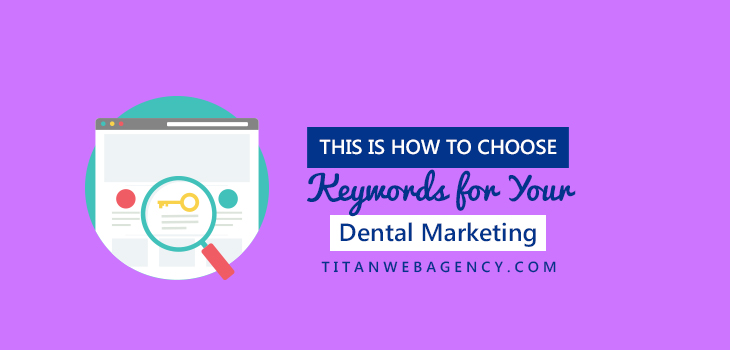I think you'll agree with me when I say that Google Local search is essential for any dental practice to succeed and hit their new patient goals. Optimizing your website for maximum visibility in local search is your business's best shot for appearing on the first page of Google search results as a part of the "local pack".
With great local dental SEO, your practice will appear just below the paid ads and just above the first organic result.
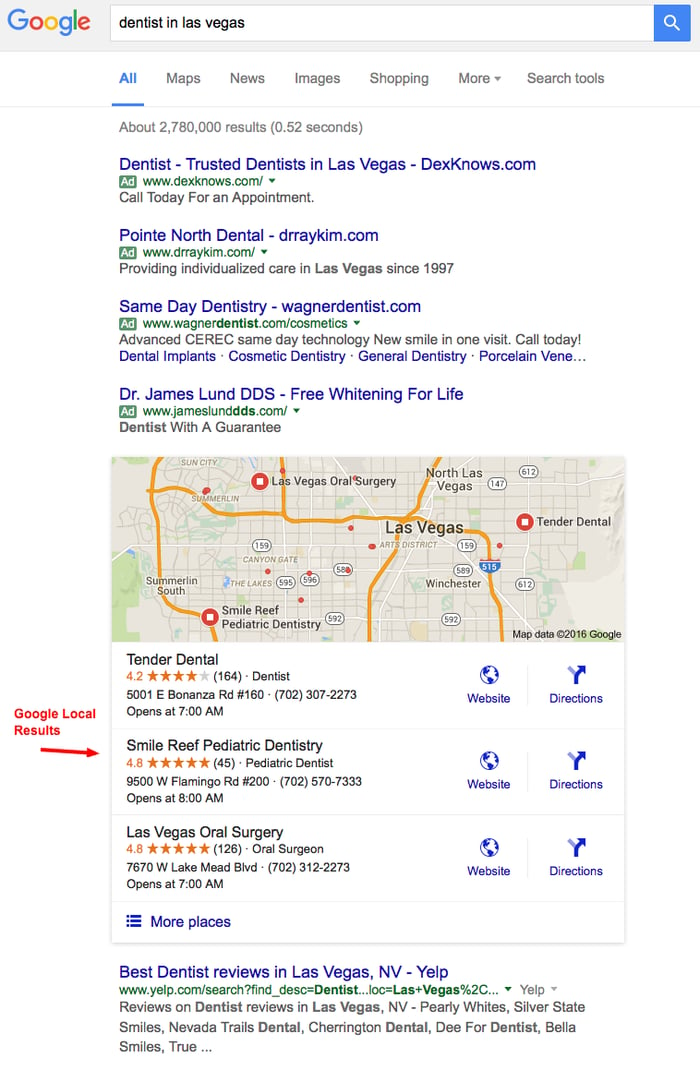
But what many people fail to realize, is that optimizing for local search results is actually quite a bit different than a traditional SEO campaign.
On top of that, Google is constantly working to improve its results, making local one of its fastest-changing areas of search.
We call these algorithm changes.
If your practice is not performing as well in the local search results as you'd like, then this blog post is going to get you going in the right direction.
Google Business Profile For Dentists: 10 Tips for Increasing Your Local Search Visibility
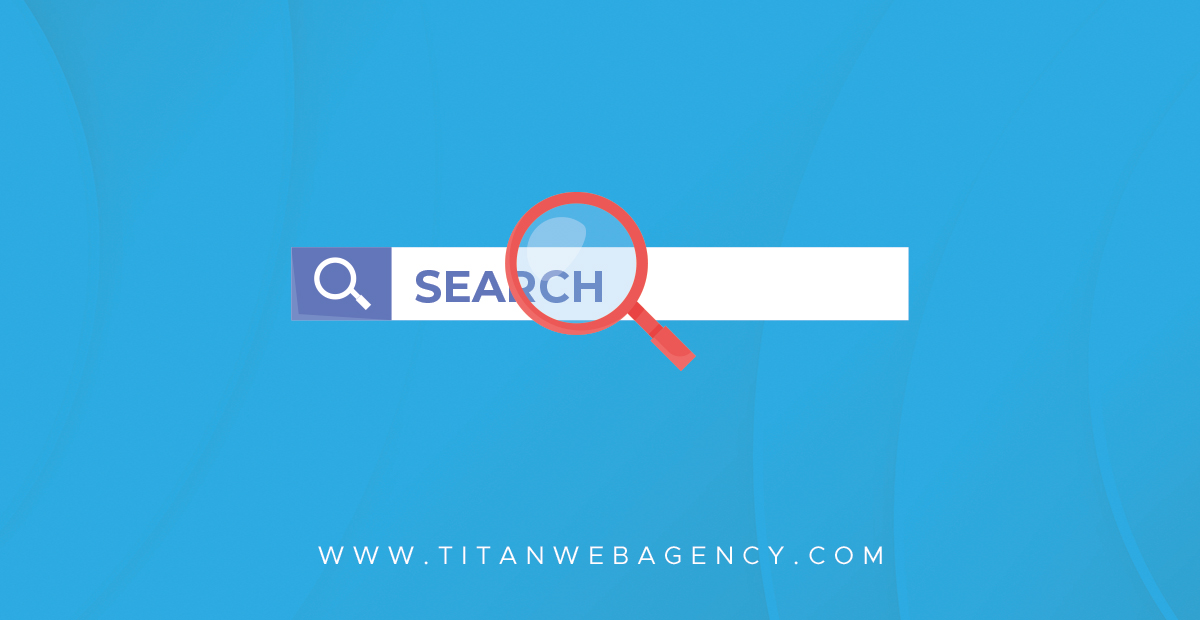
1. Connect your Google Local and Google+ Brand pages.
So many changes! As Google Plus is no longer around, you no longer have to complete this step.
Google properties have changed a lot over the years, so if you've been marketing online for a while, it's pretty likely you have a pre-existing brand page on Google+ and a Google Local business page (if not, move onto step two).
Now, Google has made it possible for you to transfer data from your local page to your brand page, meaning that your Google Maps pin, reviews, location information, business verification, and social presence can appear in the same place.
Here's how you do it:
First, log in to Google+, and select Pages from the navigation. Choose your local page (the one that's verified), and click Manage this page.
Next, click Settings and then find Link a different page to this location. Here you can choose your Brand Page and connect it to Google Maps.
You'll be asked to confirm the connection to make a successful merge.
After, Google will prompt you to remove the former page, which it will categorize as "backup."
The important result is that your Google+ Brand Page will now have the 'verified' tick mark:

2. Set the correct categories.
Google uses your categories to match your business up as a result for the right searches, so it's important that you use the right ones, and take advantage of all 5 categories.
Your first "primary" category should refer to your business, e.g. "dentist."
Your second category should include a more specific term for your service or one of your services such as "cosmetic dentist" or "teeth whitening".
Google explains how you can use the Data Highlighter to help them understand your business a bit better in this post.
3. Double check your hours of operation.
Double-check to make sure your hours of operation are listed in Google and are correct.
While it's impossible to know for sure every factor that plays into local search rankings, some reports say that Google is less likely to rank highly a company that is closed or has no hours of operation listed at all.
You can also take this step as an opportunity to include images of your business and more information about payment options.
4. Make sure your NAP is consistent.
If you already have a Google Business Profile, then you've already set it up with your business name, address, and phone number (NAP). Google has very strict requirements for what this can be, so make sure:
- Your display name reflects your real-world business name exactly
- You use a physical address, not a PO Box
- You use a local phone number, not a 1-800/toll-free one.
Google is looking to determine the legitimacy of your business, and it does this by comparing your NAP to other places around the web where your business might be listed.
So, you should go around to places like Citysearch, Superpages, and Yelp, to make sure their listing of your business matches your Business Page NAP exactly.
If it doesn't, contact them to change it. Having inconsistent information across these different directories can lower the confidence level that Google has in your business, and as a result, you may not rank as high as you could.
You can be sure you checked all your citations by using a backlink checker tool like Backlink Watch. Simply input your website URL and they'll show you all of your backlinks. You can then check and make sure that your NAP, if it appears there, is correct.
5. Get more citations.
If you're sure your NAP is consistent across listings and you're still ranking poorly in local search, it could be because you don't have enough citations.
Link building is probably something you're familiar with from regular SEO, but the strategy is a little different for local purposes. You should worry less about trying to get links from high authority websites and put more effort into getting citations from local websites relevant to your business.
Here are some different strategies you can use to find potential citations:
- Use a service like BrightLocal to research your competitors' citations, then try to get cited at the same places.
- Go through BrightLocal's list of citation sources by city and by category so you can manually submit.
- Set up a Google Alert to email you when new mentions of your competitors' NAP appear.
Using Bright Local, you can run a report like the below, showing what citations you have with links directly to them so you can make sure they are accurate. You can also run this report on your competition, uncovering citation opportunities.
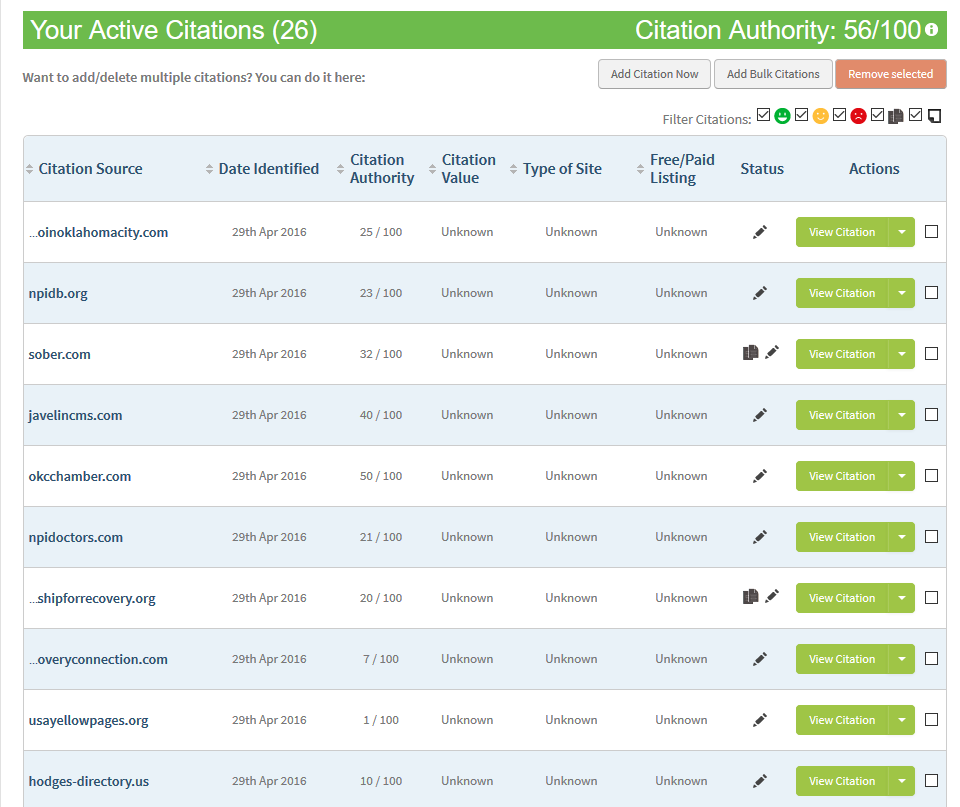
6. Embed Google Maps in your website.
If you embed Google Maps into your website, then Google can easily confirm that your business location matches the one in your verified Google Business Profile account.
Your contact page is a great place to put your Google Map.
First, search for your business in Google Maps. Then, click on the three lines at the top left. Then you'll see a share button:
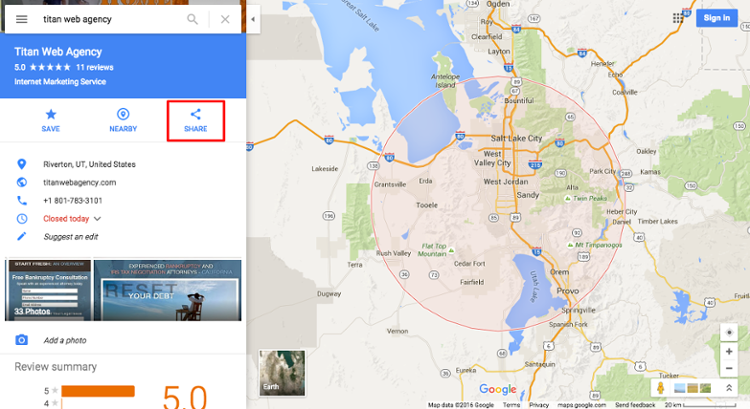
Here's what you do:
Click that, and a pop-up will appear. Next, click Embed map:
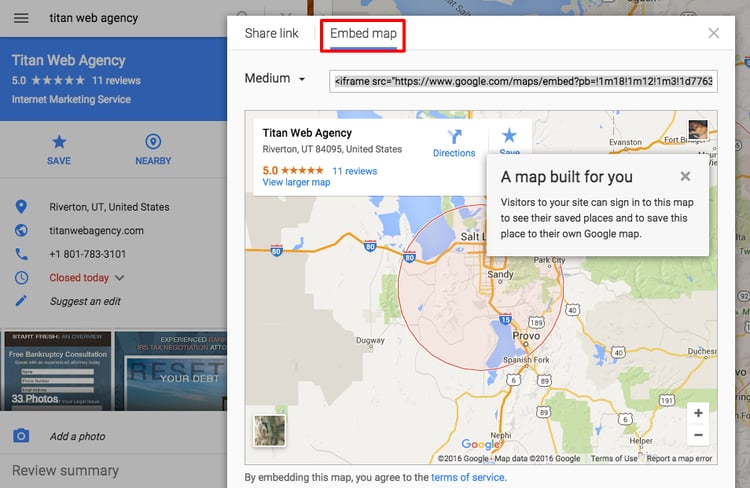
Copy the code that appears, and paste it into your contact page.
Now, you'll have a nice way to display your office location:
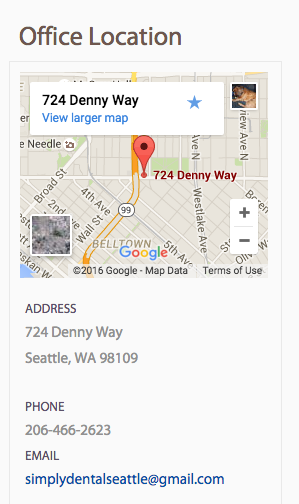
7. Get more reviews.
The number of reviews you have on Google has an impact on how you rank in local search, so it's important to get as many positive ones as you can.
They're also going to be really important for your local listing's CTR (which I'll talk more about later) since the reviews appear right with your listing when someone searches for your business:
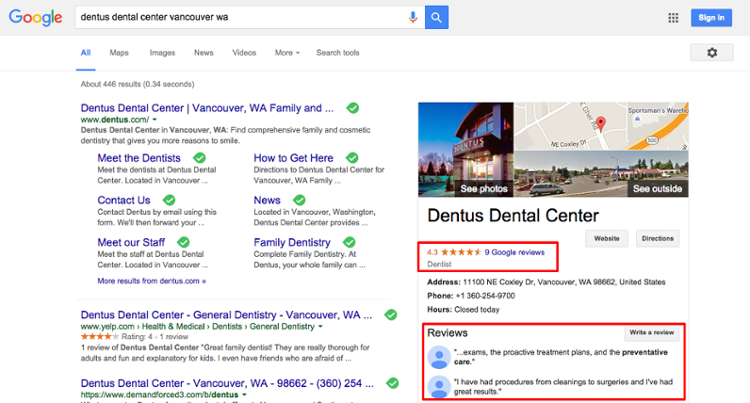
And while Google reviews should be your number one priority, it's also important to get reviews on Yelp (which Apple Maps uses), and other review websites.
Here are a couple of basic ways you can encourage more reviews:
- Contact your existing patients and ask them to review. Offer incentives, such as a discount or free exam for their time.
- Put together a page on your website that shows patients exactly where and how they can leave reviews of your practice. Use a link that sends them straight to your Google Maps listing where they can leave a review.
If you need more help strategizing how to get reviews, I offer some tips in this post: Dentist Reputation Management: 5-Star Guide to Review Management for Dentists
8. Optimize your pages for local SEO.
One reason your business might not be ranking well in local search is that your pages aren't properly optimized for it.
First, check your site's on-page optimization.
On-Page SEO
Your website, and specifically, your service pages, and other landing pages, should of course focus on relevant keywords for your area and services you offer. If possible and appropriate, consider including your city and state with them, in your:
- Title tag
- H1 tag
- Page URL
- Within the content
- ALT text for images
Anchor Text
You should also make efforts to include location keywords in your anchor text throughout your website. Anchor text is the words associated with inbound links.
Instead of creating anchor text that says "click here," you can change it to say "learn more about West Seattle Dental here," for example.
Just make sure you use some variety in the anchor text you use throughout your website, otherwise, Google might see it as evidence of unnatural internal linking, which could negatively impact your rankings.
9. Increase your social signals.
Recent research by Search Metrics found that social signals appear to be an important rank factor for Google organic search. Moz's research into local ranking factors backs this up:
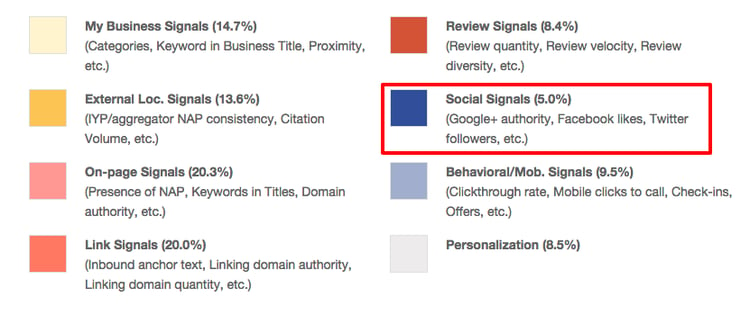
Image via Moz
If your business is lacking social signals, this could be contributing to your poor local search rank.
To address this, make sure you have complete social media profiles set up on LinkedIn, Facebook, and X, at minimum. Then, work on getting followers and encouraging engagement, likes, and shares.
10. Check your click-through rate.
Clickthrough rate (CTR) from SERPs appears to be another important factor for local ranking, so you should see how yours is doing.
Checking on your CTR is easy to do in Google Analytics. On the reporting tab, go to the side menu and click Acquisition, then All Traffic, and Source/Medium.

Google Analytics will then display your CTR data over time.
If you find that your landing page has a low CTR, this is probably a contributing factor to your poor local rankings.
Luckily, there's plenty you can do to improve it.
- Make sure you have a Schema.org markup set up. Schema creates code you put on your website that helps Google understand your data and create an appealing listing for your website in SERPs.
- Optimize your title tag for relevancy and readability (use target keywords and language that resonates with your audience).
- Have a relevant and detailed meta description (If you use Paid Search as well, you can use it to test the effectiveness of different meta descriptions-- read this post to find out how).
Check out this post to learn more about the best practices for optimizing title tags and meta descriptions.
Conclusion:
Taking advantage of Google Local Search is one of the best ways to make sure your medical practice or dental office appears on the first page of search results so that you can get more new patients.
At the same time, Google's local algorithms are constantly changing, meaning that simple oversights or mistakes can cost your business valuable rankings.
It can be hard to figure out exactly why your business isn't ranking well in Google Local Search, but if you use the tips outlined above, you'll be fast on track to troubleshooting the problem.
- Tyson Downs
- Local SEO, Dental
Tyson Downs is the founder of Titan Web Agency, a company specializing in marketing for dental professionals. With an impressive track record of working with over 100 dental practices, Tyson has a deep understanding of the unique marketing needs within the dental industry.
Leave a Reply 0 comments







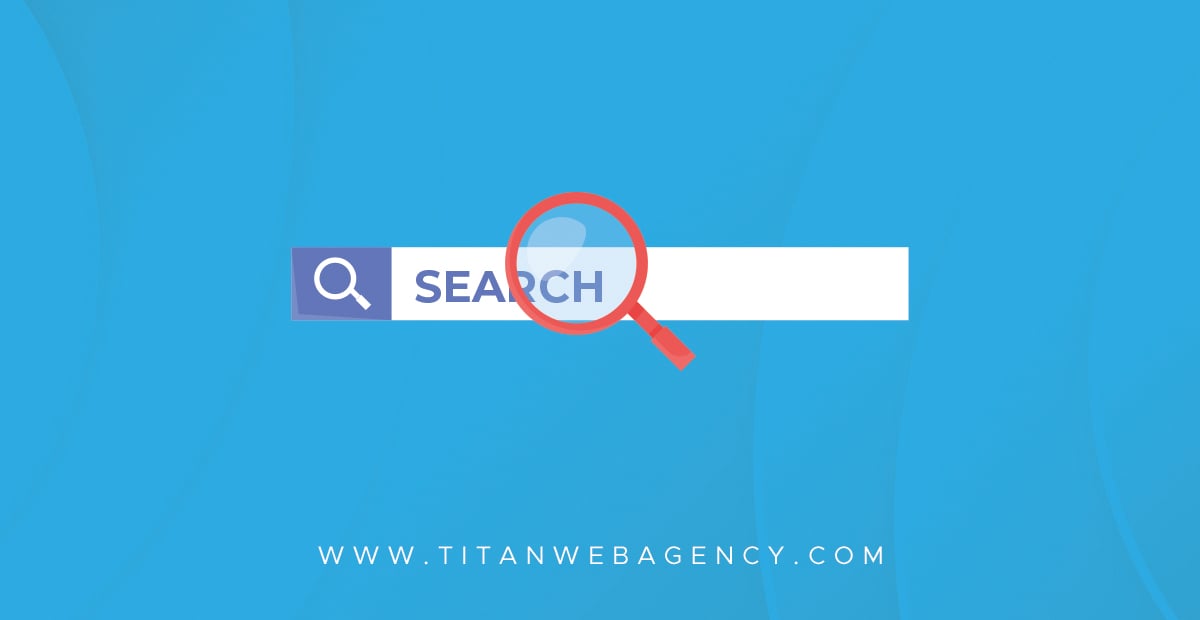


.png)
.png)
